A Multimedia Exploration of the Story of Vulcan, Blending Film, Poetry, Sound, Music, Art and Science

Clas Svahn is a celebrated Swedish author, journalist and blogger who worked at the Dagens Nyheter national newspaper. He is chair of the AFU – Archives of the Unexplained and chair and director at the Riksorganisationen UFO Sweden. In 2024 The Swedish Association for Science and Public Education ( Vetenskap och folkbildning) named him Public Educator of the Year.
Clas recognised images of the St. Helens volcanic eruption in our Cradle of Fire film and related how he had flown over the U.S. volcano just after that event.
Here, he recounts that dramatic experience in the run-up to the immersive screening of Cradle of Fire in the Switch Room at No Bounds Festival, Sheffield.
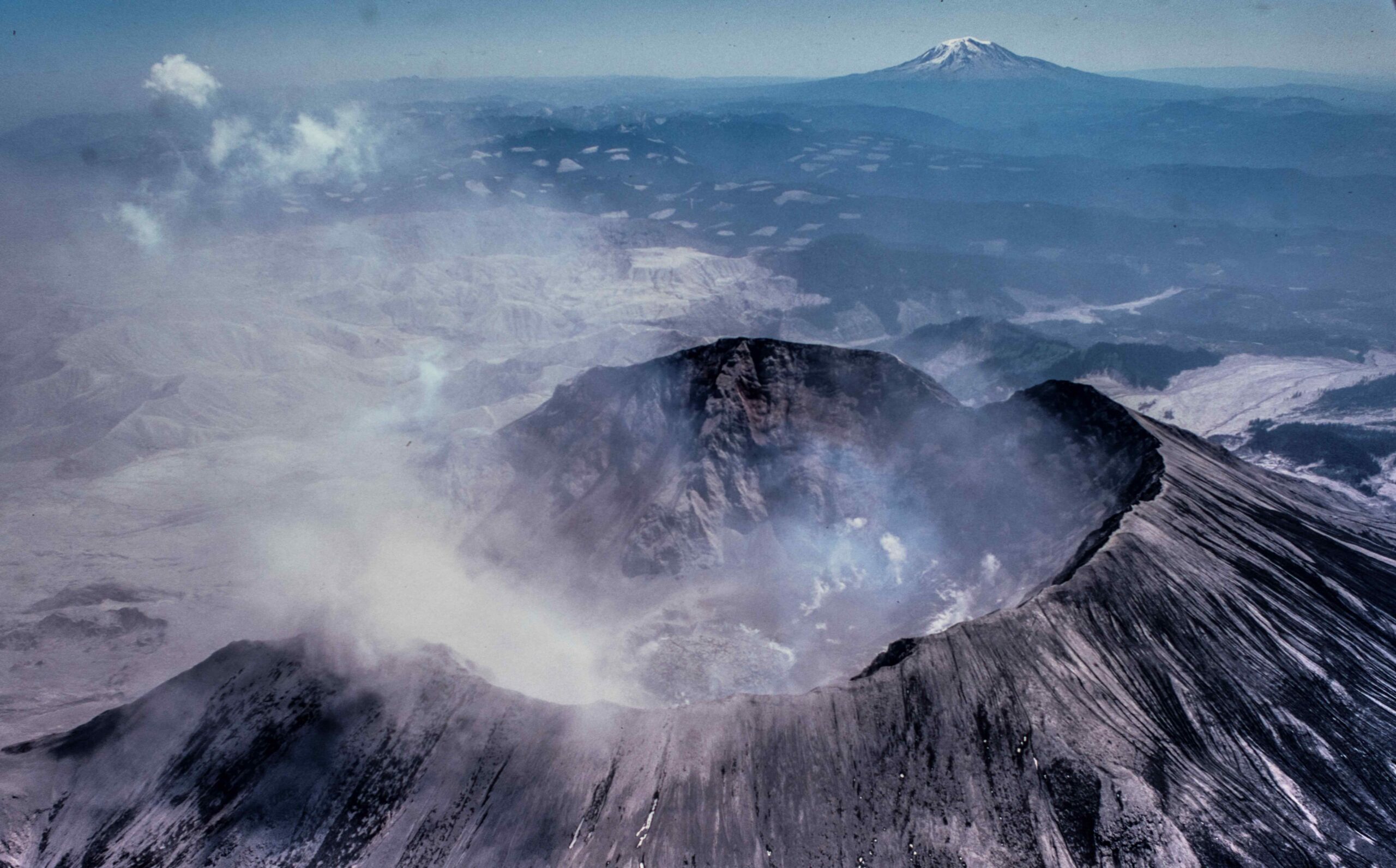
Mount St Helens volcano with Mount Rainier in the background. Copyright Stefan Svensson.
It is early June 1980, just a couple of weeks after the catastrophic eruption of Mount Saint Helens, the sleeping volcano in the state of Washington in northwestern USA. Me and photographer Stefan Svensson had hired a pilot from Dexter Aviation to fly us through the restricted area.
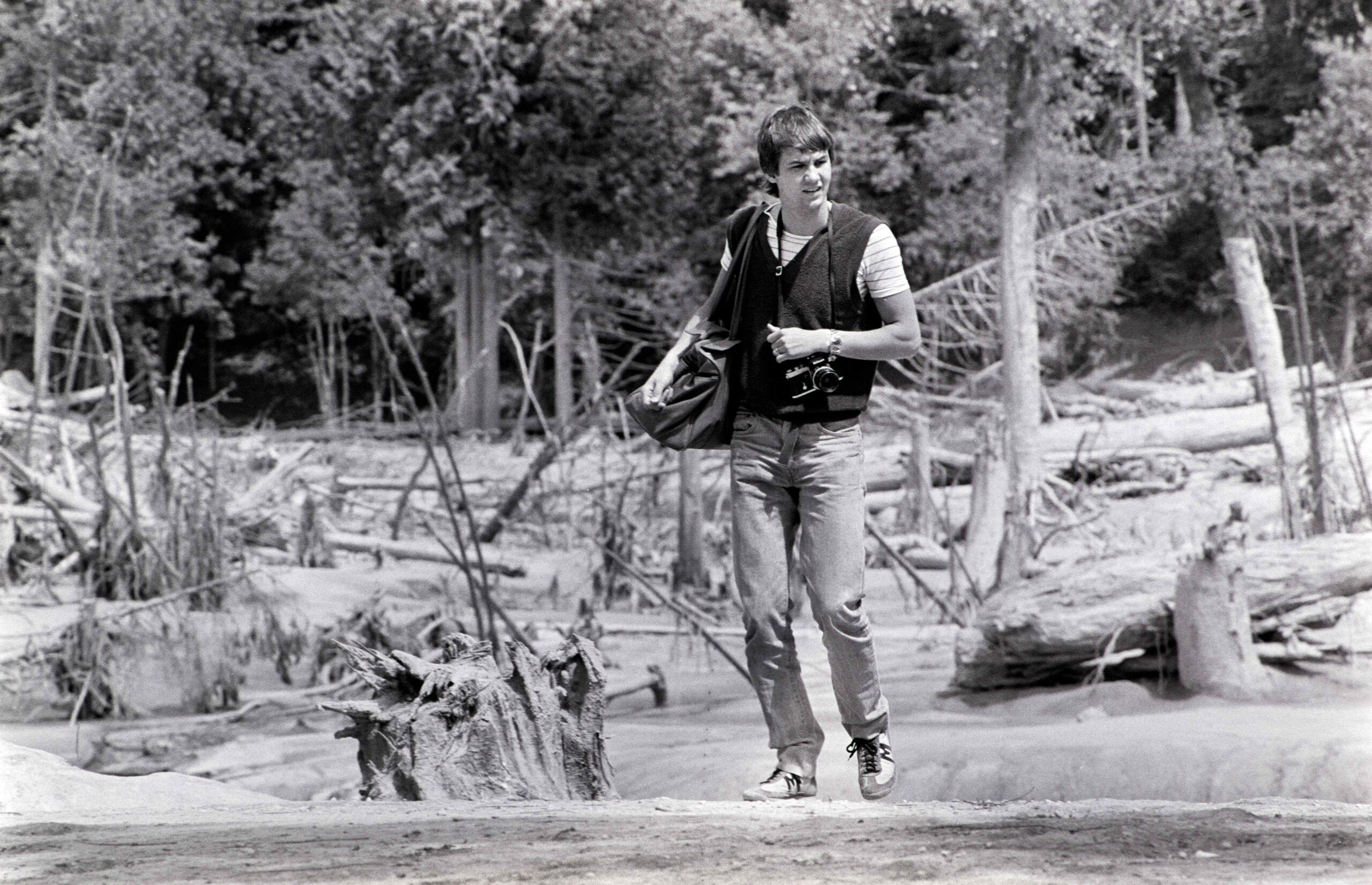
Photographer Stefan Svensson at the scene of devastation. Photo permission Clas Svahn.
The sight that met our eyes was beyond description. Miles after miles of greyness, tens of thousands of fallen trees.
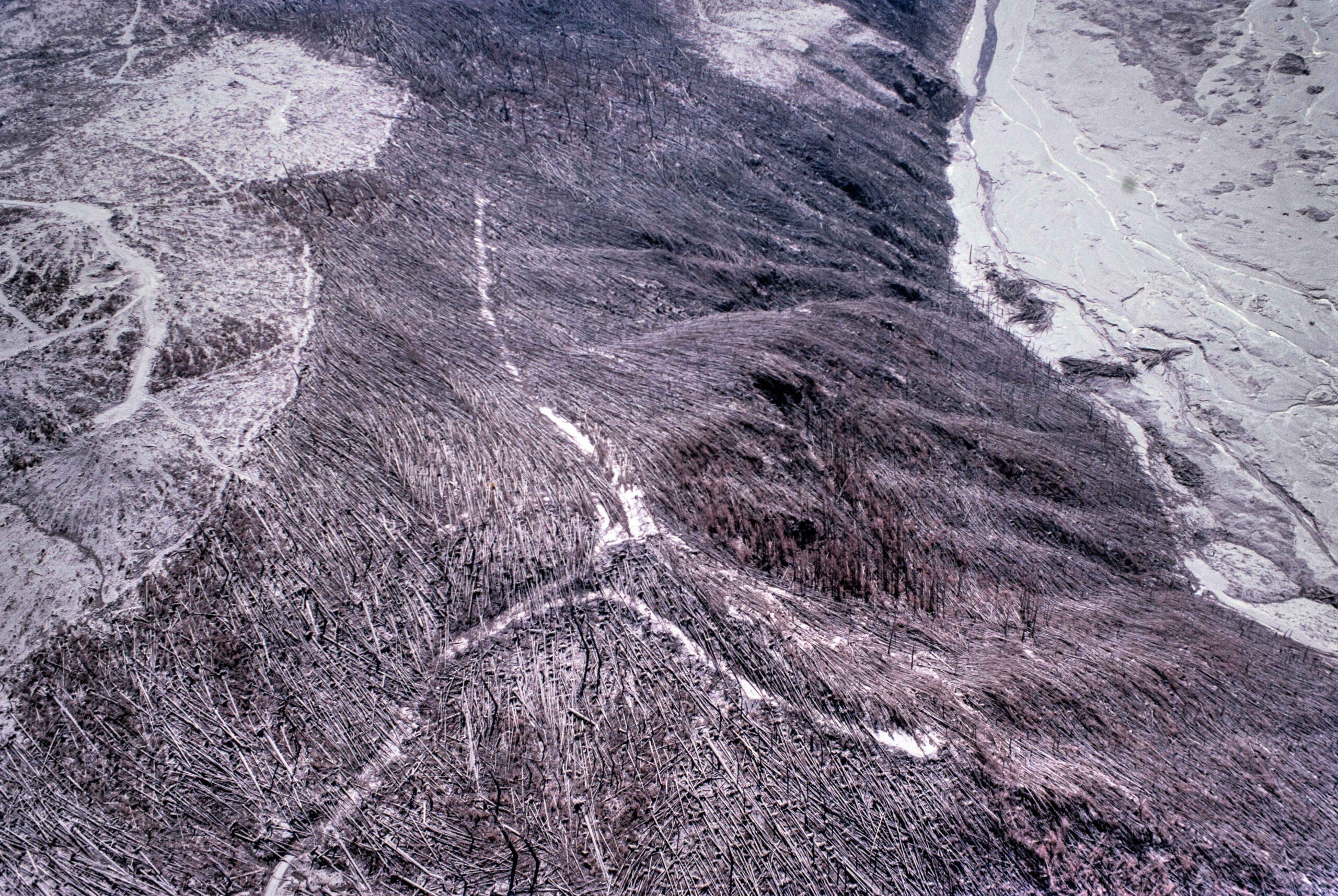
Aerial view of fallen trees. Copyright Stefan Svensson.
In between a car was trapped by falling trees, making it impossible for the people inside to get away from the eruption.
It all reminded me of the fur from an animal. A fur pressed hard to the ground from the winds created by the blast. And it never seemed to end.
Not far from us I could see what once was Spirit Lake, now empty of its water and grey with mud as everything else.
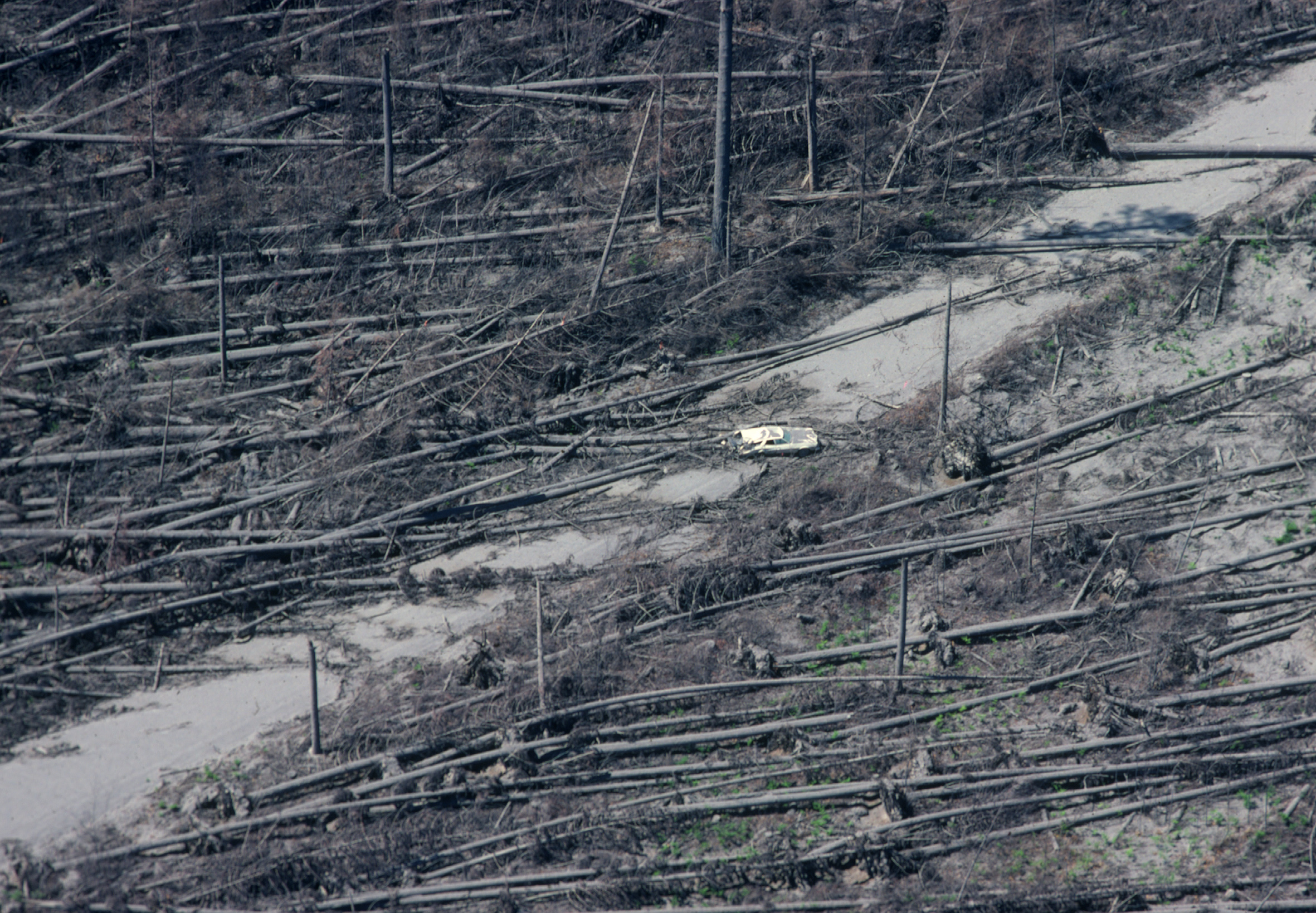
A car trapped by fallen trees after the 1980 volcanic eruption at Mount St Helens, Washington State, U.S. Copyright Stefan Svensson.
After getting clearance to enter the restricted airspace our pilot took us over the caldera and its razor sharp edges so that we could look straight down the still steaming volcano. In the middle we could see an enormous green structure called the champagne cork. Filled with cracks. The next day the cork was thrown hundreds of meters in the air when Mount Saint Helens had another eruption. And we were lucky not to be there.
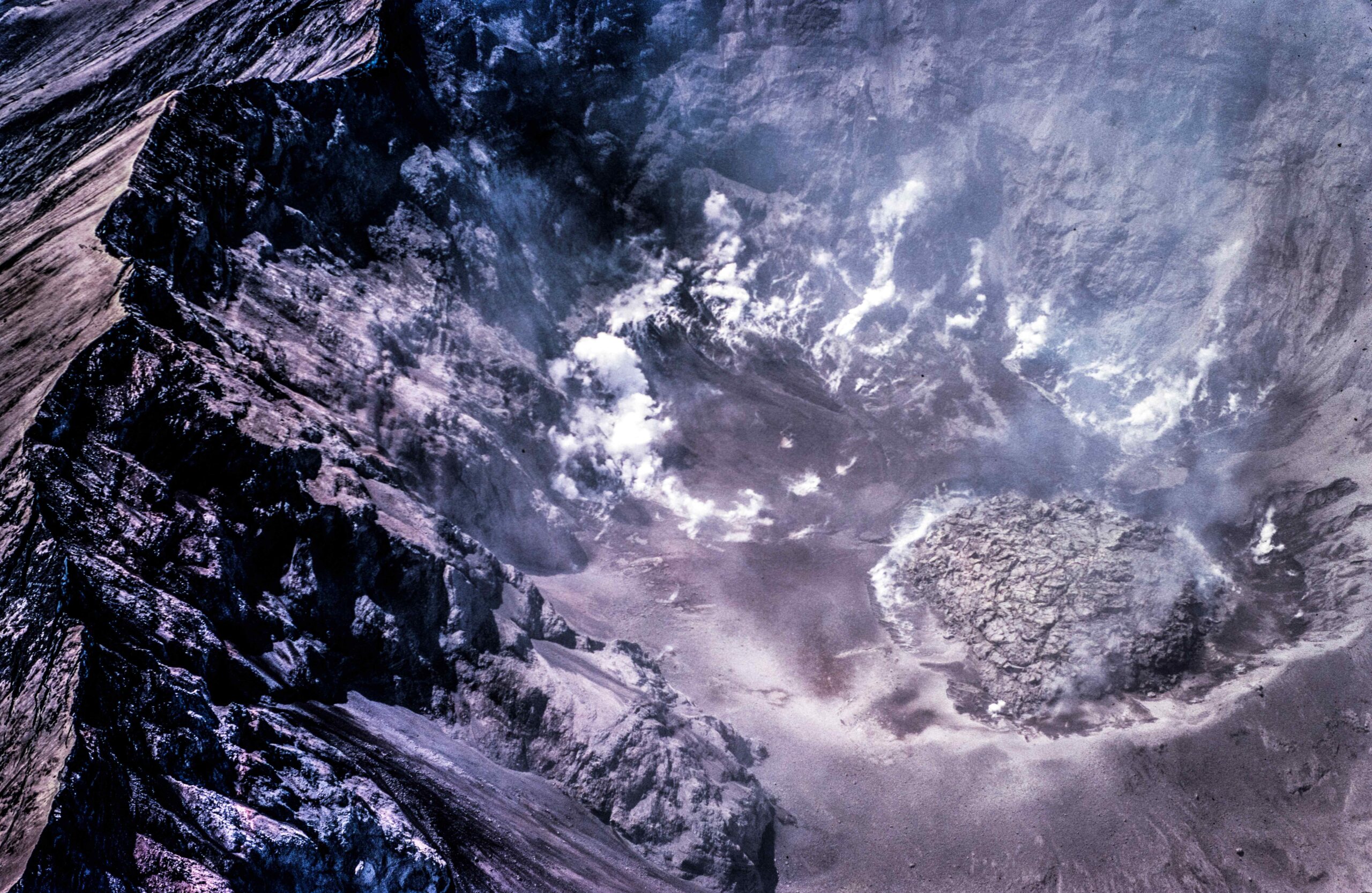
Aerial view of the Mount St Helens caldera after the first 1980 eruption. Copyright Stefan Svensson.
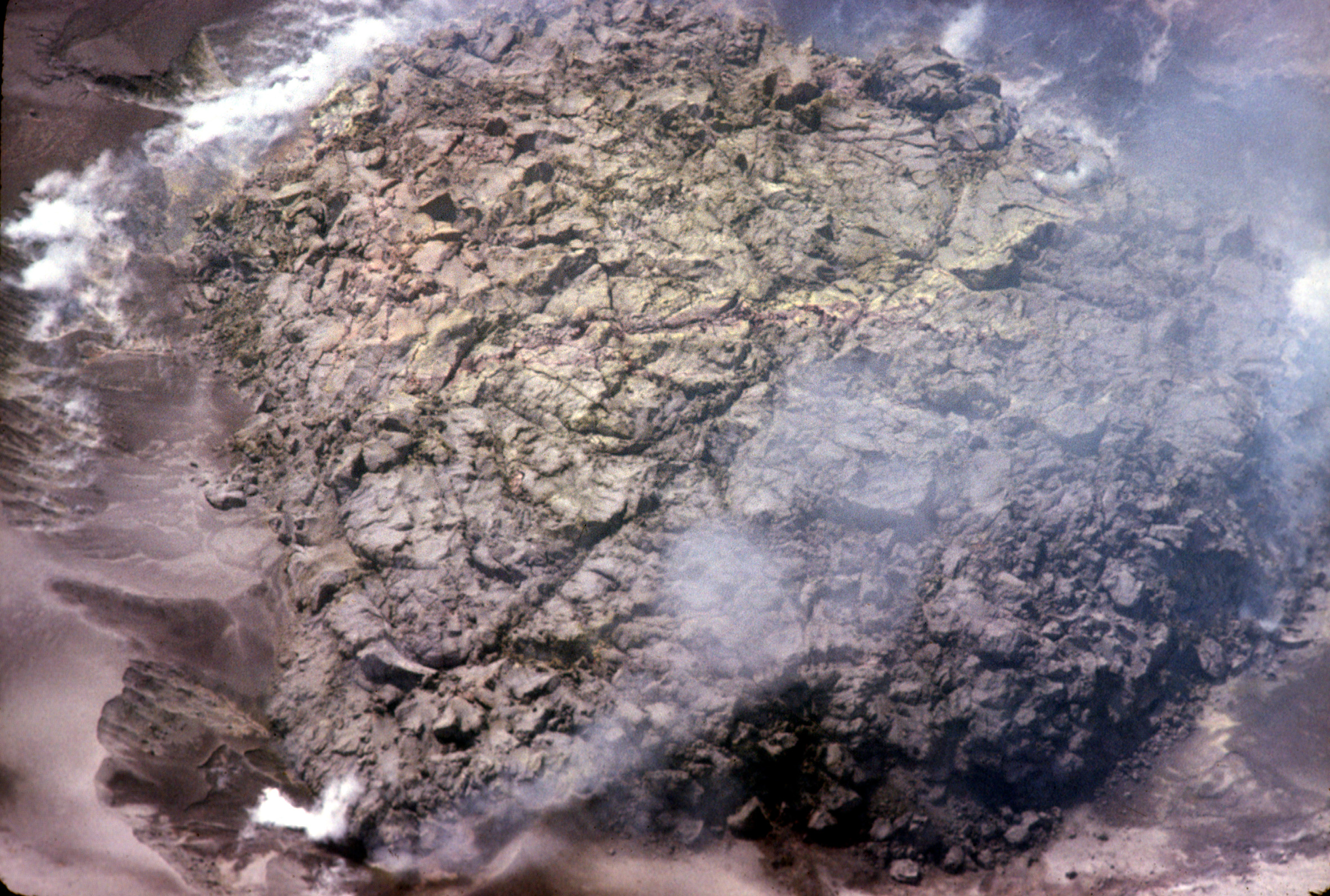
The caldera at Mount St Helens volcano, Washington State, U.S. Copyright Stefan Svensson.
On the ground the devastation was as clear as from the air. Toutle River had in moments changed from a stream of clear water to a wall of mud, pressed by the eruption to reach heights nearly five meters.
As we walked along what was once the river bank we could see trees covered with mud many meters up and it was impossible to understand how enormous this wall of mud must have been, sweeping away everything in its way. Houses that had been built near the shore were completely gone and all that was left was the concrete ground.
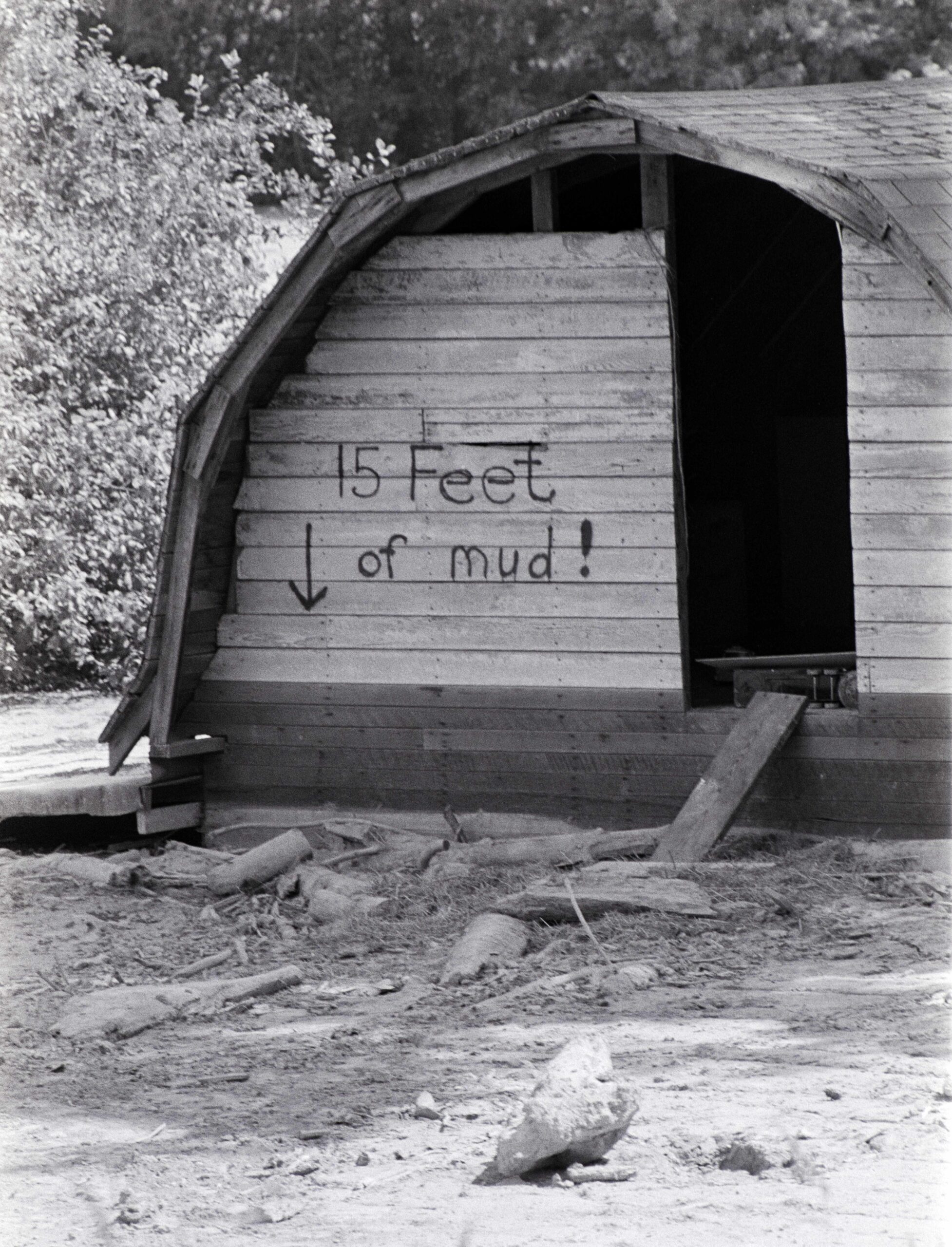
The height of the mud wall after the eruption at Mount St. Helens volcano. Copyright Stefan Svensson.
Second eruption
Back at our motel we were lucky to meet Earl Halvorsen, a 55 year old man who all his life had lived near Mount Saint Helens. When the mountain erupted Earl had been working just a kilometer from the foot of the volcano.
Even though he had been documenting the awakening for days the final blast came as a total surprise and he was lucky to escape in his car. Minutes from being engulfed by the thick ash that soon filled the air.
In his hotel room he showed us his Super 8 film on which he day after day had documented the first signs of what would finally be a fatal blowout.
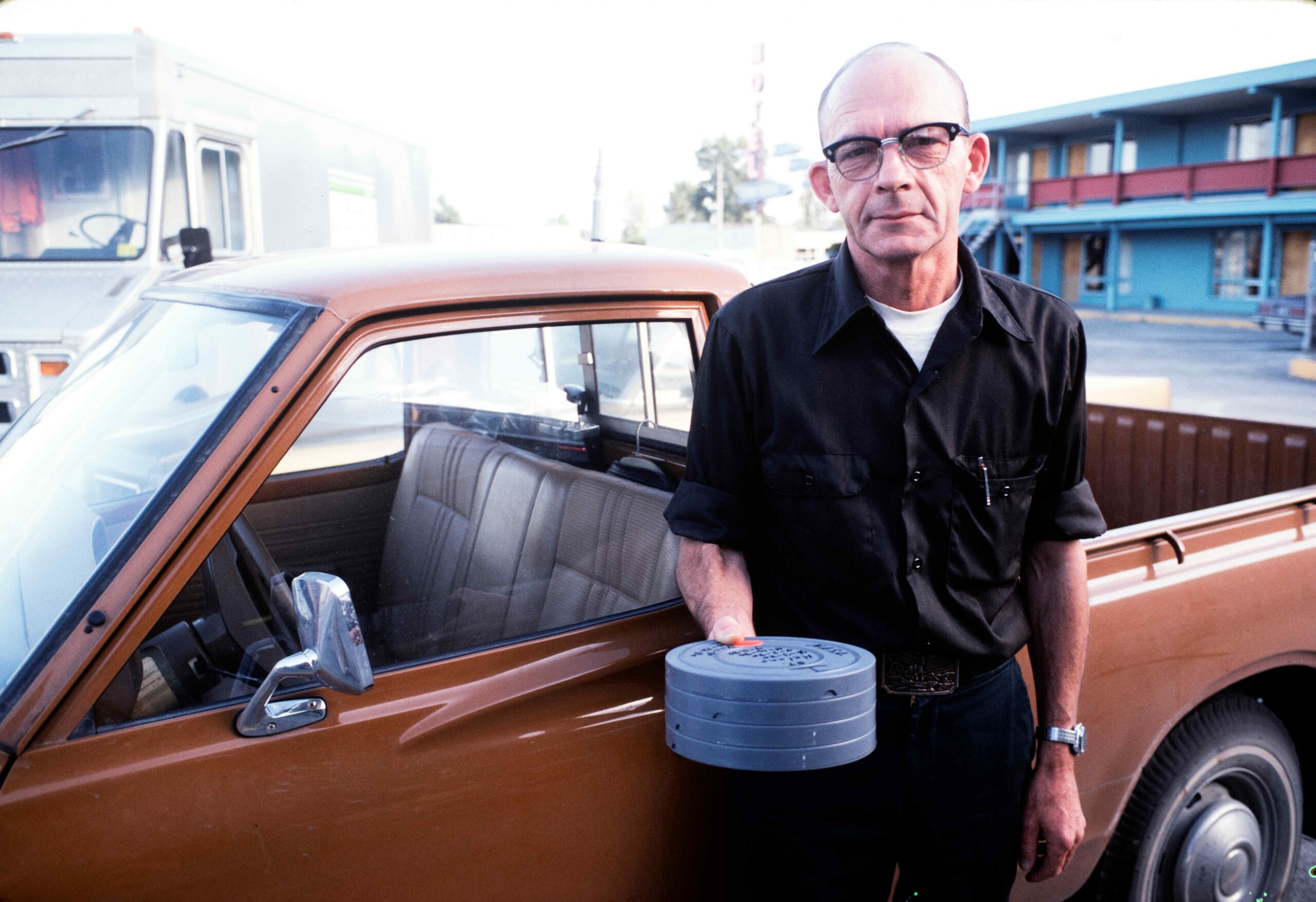
Earl Halvorsen holds the reels of film on which he documented the eruption at Mount St. Helens. Copyright Stefan Svensson.
Every minute the steam was getting thicker. The last piece of film was taken less than a day before his world changed forever. Earl described what had happened:
– Suddenly I was thrown to the ground by a wind that was like a giant’s hand had hit me.
– When I tried to get on my feet again my head was dizzy and my legs all numb. Everything below my waist felt like it was gone.
– I couldn’t understand what had happened. Everything above me was black and it was like the whole world around me had disappeared from one moment to the other.
He told us that his first instinct was to get away from whatever it was that had happened, but first he ran to get his camera to film it. All was black.
Nature is a strong force and meeting it eye to eye like we did makes one humble. And one thing is for sure. Mount Saint Helens will erupt again in the future.

We’d love to hear from you as we develop the Cradle of Fire project. Please use the contact page to get in touch.
Cradle of Fire is a research and development project, supported by public funds from Arts Council England. We are also grateful for support from our partners and creative collaborators. Read more on the dedicated About pages.
Check our progress to date and future plans via the timeline